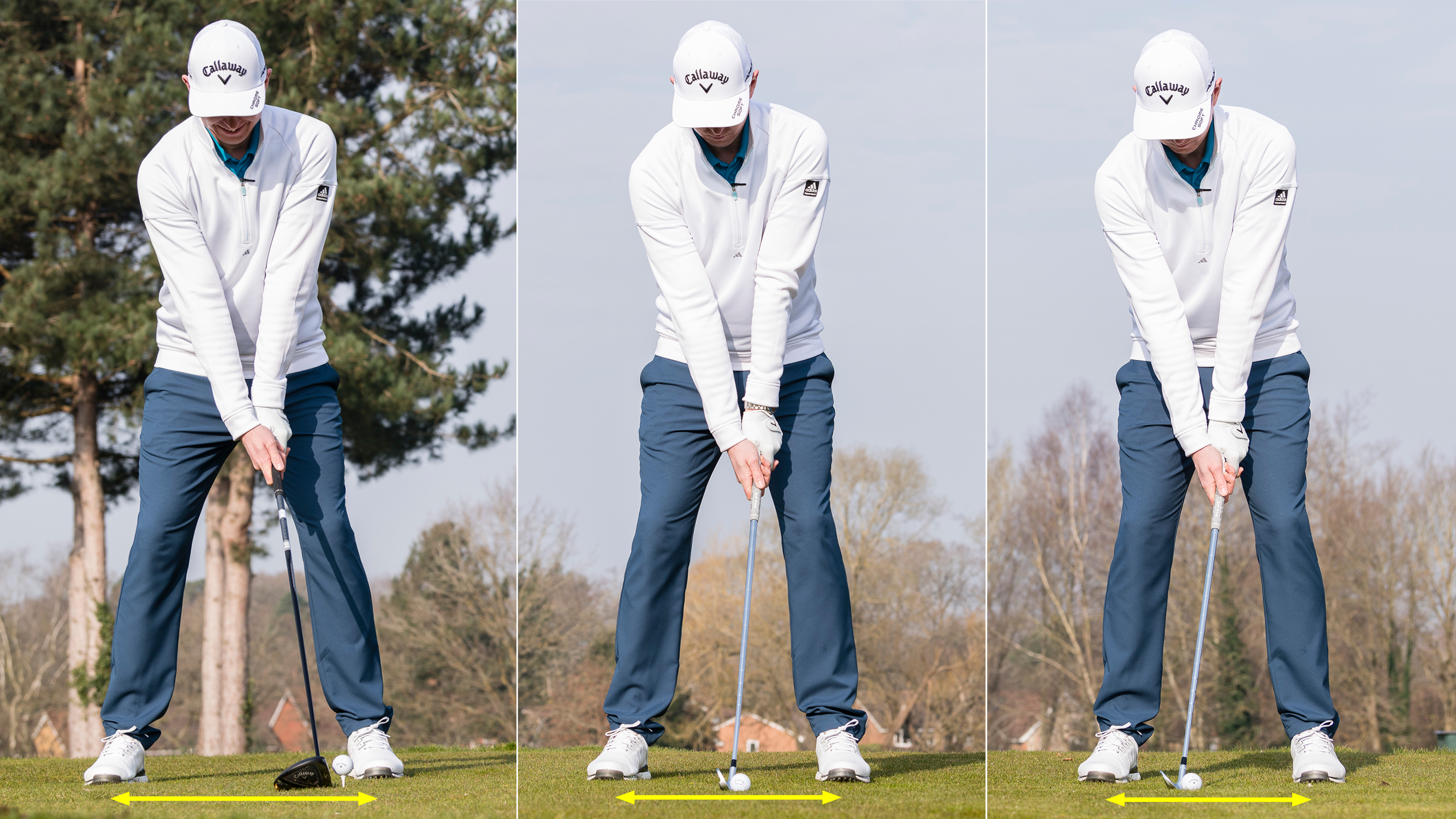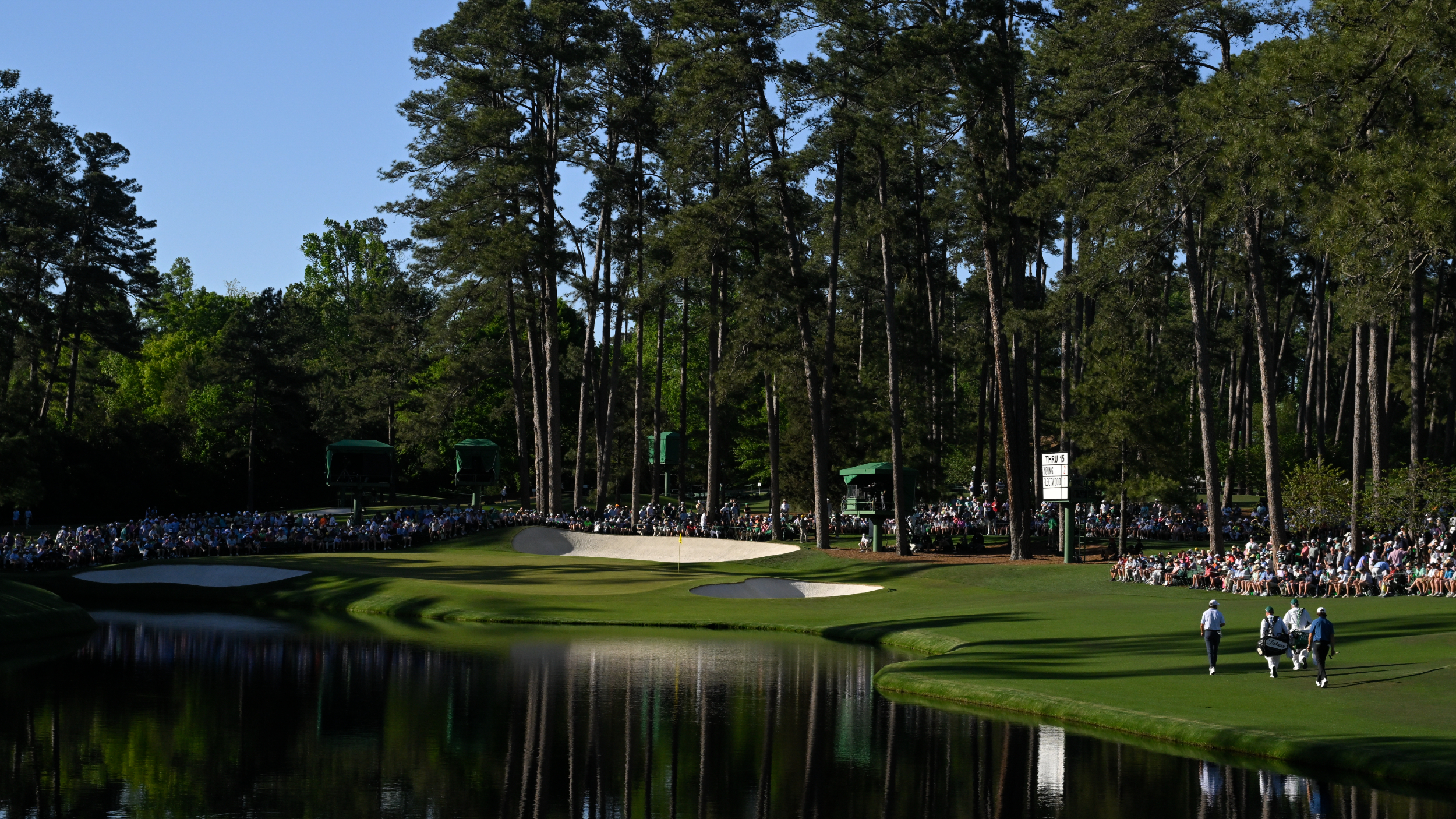How Wide Should Your Golf Stance Be?
'How wide should your golf stance be?' is a question that many amateur golfers ask, and thanks to our expert, we have the answer....


Golf Monthly created this content as part of a paid partnership with Callaway. The contents of this article are entirely independent and solely reflect the editorial opinion of Golf Monthly.
Having the correct stance width is a basic fundamental of the golf swing, and it's one that can dramatically improve the consistency and quality of your ball striking. Mastering this crucial aspect of the setup will also ensure you have the perfect ball position with every club, preventing many common swing faults for amateurs.
In this video and article, Golf Monthly Top 50 Coach Ben Emerson shares his top tips for finding the correct stance width in the golf swing...
How Wide Should Your Golf Stance Be?
When focusing on your stance width, you need to be clear on what you are trying to achieve. In essence, you are looking for a strong stable base and a turn that helps you move away from and back towards the target.
In many ways, these two aspects work in opposition, so a certain level of balance is required. The extent of this varies from club to club, but the general rule is the longer the club, the wider your stance should be.
This is due to the additional shaft length, which creates more clubhead speed, requiring the stability provided by a wider stance. You should note, however, that if your stance gets too wide, the mobility and weight transfer in your swing will be more restricted. This could lead to a reduction in power, which is why it's crucial to strike the right balance.
Driver
With the correct driver address position, you’re looking to establish a base that will provide stability and speed. To do this, start by setting the ball up inside the heel of your lead foot - use alignment sticks when practising to make this easier.
Get the Golf Monthly Newsletter
Subscribe to the Golf Monthly newsletter to stay up to date with all the latest tour news, equipment news, reviews, head-to-heads and buyer’s guides from our team of experienced experts.
Crucially, your hands should hang down naturally from your address position - do not push your hards towards the target, this will de-loft the club and cause problems through the impact position.

Setting the ball up in line with the inside of your left heel will help when hitting the driver
Having your feet shoulder width apart is a great baseline and from there, take one more step away from the target with your trail foot to set the ideal base from which to produce power. By doing this you should also feel how your weight moves towards your trail foot - this is ideal for driving.
Irons
But what about when you’re not trying to hit the ball as hard? When hitting a 7-iron for example, you still want stability but you don’t need the same width as with the driver. Again, shoulder width apart is a great starting point, with the ball just a fraction forward of centre.
From here, widen the stance ever so slightly and you’ll be in the perfect position to rotate from a stable platform. Get this right and you'll be able to master the ideal weight distribution in the golf swing.

With an iron, you want the stance to be a little narrower to promote proper weight distribution and angle of attack
Wedges
Finally, moving on to wedges, and this is an area of the game that’s all about finesse, so you don’t need as stable a base. All you need is a stance that’s going to keep you in balance, allowing you to retain control while you rotate back and through. On full shots, around shoulder width apart works well and that can be made narrower as you approach the green and the swing length reduces.
One Final Checkpoint...
You shouldn't look at stance width in isolation without also checking the position of your sternum. Quite simply, it should be directly above the middle of your stance, regardless of which club you have in hand.
If your sternum moves towards the target, so too will your weight and this could cause thin strikes and low trajectories. Too far back and you'll be in danger of hitting heavy shots. If your stance width and sternum are both in the correct position, you'll have a much better chance of hitting the ball sweetly.

Location: Sand Martins GC
Ben’s modern approach to golf coaching has seen him become one of the most sought-after coaches in the country and teaches none other than Robbie Williams. His honest, modern and fun style of coaching has help thousands of golfers of all ages and abilities and he has been coaching for over 20 years.
Advice for practice:
Start with slow, small swings. If you can’t do it small and slowly there is not a hope in hell of doing it at full speed with a full swing! In other sports such as rugby or martial arts they slow learn new moves/plays before making them at full speed.
Teaching philosophy:
‘Why guess when you can access’ Ever new student goes through a full TPI movement screen, 3D motion capture and pressure plate analysis as well as TrackMan and 2D video analysis. Coaching is based on facts and not guess work.
Most common problem:
A lack of clubface understanding and awareness. I get golfers to aim the clubface directly at the target and get them to make a slow swings and deliver the club to the ball with an open face, then repeat the same thing again but with a closed face, followed by one at the target. Giving them full awareness based on feelings errors to find a happy middle ground.
-
 Why The 16th Pin Has Been Moved From Its Traditional Spot For The Masters Final Round
Why The 16th Pin Has Been Moved From Its Traditional Spot For The Masters Final RoundThe 16th pin at Augusta National is in an different position that normal for the final round of The Masters, but why is that?
By Mike Hall Published
-
 Seve Ballesteros And Brooks Koepka Among The Big Names That Rory McIlroy Would Join As A Five-Time Major Winner With A Masters Victory
Seve Ballesteros And Brooks Koepka Among The Big Names That Rory McIlroy Would Join As A Five-Time Major Winner With A Masters VictoryRory McIlroy leads The Masters going in to the final round and, if he were to win, he would join an illustrious list of five-time Major winners
By Matt Cradock Published